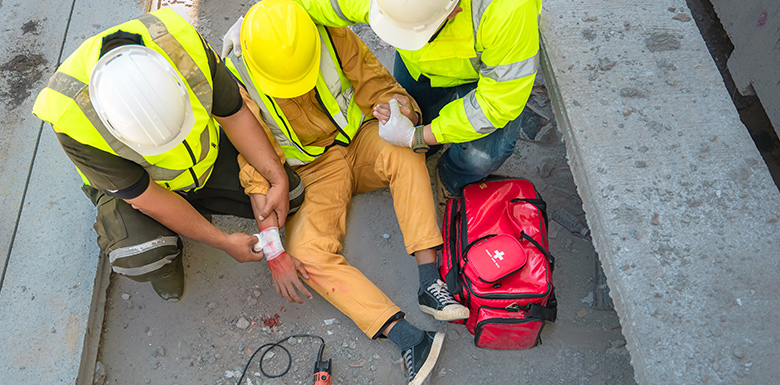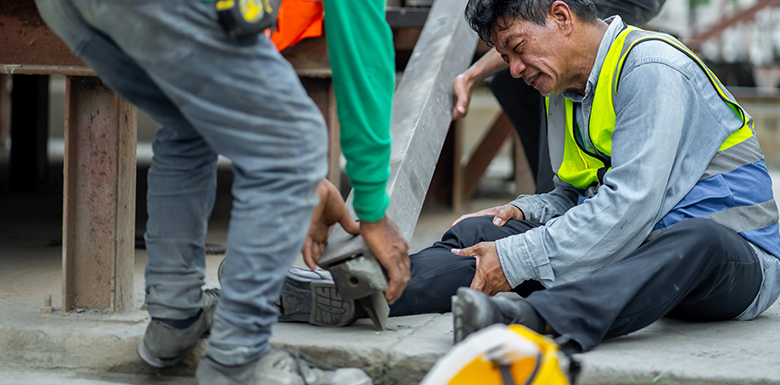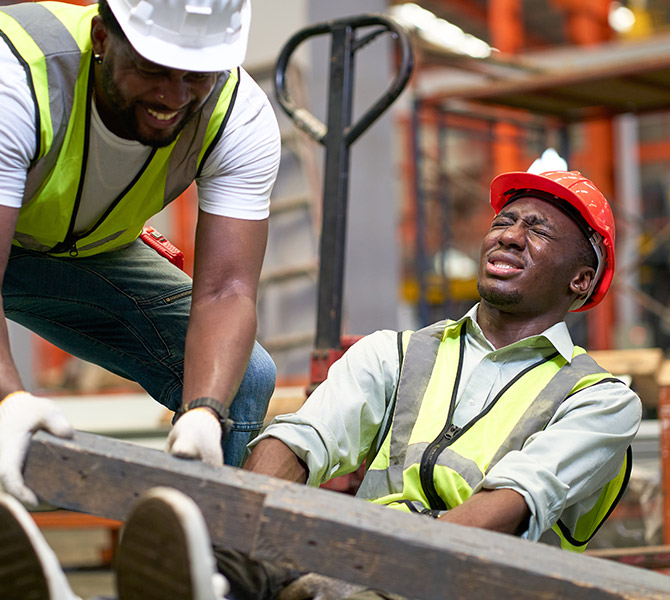Falling Object Accidents in NY
OSHA lists “struck-by” hazards—including falling objects—as one of the “Fatal Four” leading causes of construction worker deaths. These accidents occur when unsecured tools, materials, or debris fall from heights, striking workers below.
Common falling objects include:
- Tools (hammers, wrenches, drills)
- Loose debris or materials
- Structural components (bricks, concrete, steel beams)
- Equipment dislodged from cranes, hoists, or scaffolding
Without proper safety measures, these objects pose a deadly risk to construction workers and bystanders.
Negligence, careless behavior, faulty equipment or machinery, failure to secure an object properly, as well as attempts to shortcut or get around the federal safety regulations for the construction industry can put workers in harm’s way.
Read What to Do After a Falling Object Injury
NYC Falling Object Stats
In 2023, New York City reported 692 construction-related injuries and seven fatalities, with falling objects being a significant contributor. Nationally, OSHA estimates that over 50,000 “struck by falling object” incidents occur annually, equating to nearly one injury every 10 minutes. To address these hazards, New York Labor Laws Sections 200, 240, and 241 hold employers and property owners accountable for implementing proper safety measures to prevent falling object accidents.
What Causes Falling Object Accidents?
Falling object accidents on NYC construction sites are often preventable, yet they continue to occur due to negligence, improper handling, and lack of adherence to safety standards. Workers and bystanders are at risk when materials, tools, and debris are not properly secured or when heavy equipment is used carelessly.
Improperly Secured Tools & Materials
Failure to properly store or secure materials increases the risk of falling objects. Common safety lapses include:
- Improper stacking of materials or supplies, leading to collapses
- Loose or unsecured tools, construction materials, or machine components left on elevated platforms
- Failure to use safety devices, such as toe boards, debris nets, or tool tethering systems
- Neglecting to post warning signs in high-risk areas
Crane, Hoist & Lift Accidents
Heavy equipment plays a major role in transporting materials on construction sites, but improperly operated or maintained can lead to serious accidents. Key risks include:
- Inadequately secured loads on cranes, hoists, and lifts
- Overloaded equipment, exceeding weight limits and causing tipping or falling materials
- Dropped loads during lifting or moving operations, endangering workers below
Structural Failures & Equipment Malfunctions
Faulty or malfunctioning equipment can cause structural failures, leading to falling objects. Some of the most common causes include:
- Weak scaffolding or collapsing platforms, causing tools and debris to fall
- Defective or poorly maintained hoists, ladders, or conveyor belts, dropping heavy objects from above
- Faulty materials or machine components, leading to sudden breakdowns
Lack of Safety Protocols & Training
Workers and bystanders are left vulnerable to preventable accidents when employers fail to enforce safety measures. Common safety violations include:
- Lack of proper training, leading to incorrect tool and equipment usage
- Failure to follow OSHA and NYC safety regulations, including load limits and protective measures
- Neglecting to enforce the “Hard Hat Rule“, increasing the risk of serious head injuries
- Failure to install overhead protection, such as safety canopies or netting, in high-risk zones
Heavy Equipment & Load-Handling Errors
Beyond falling tools and materials, workers are frequently injured by loads that shift, tip, or fall due to mishandling. These incidents often involve:
- Heavy equipment tipping over or rolling onto workers
- Loads being dropped while being moved, lifted, or loaded
- Failure to properly secure or balance loads on transport machinery
Falling object accidents are a leading cause of injuries and fatalities in NYC construction. Strict adherence to safety standards and proper training can prevent many of these incidents and protect workers from unnecessary harm.

Falling Objects: NYC Safety Standards
New York and federal laws mandate strict safety measures to protect workers from falling objects. OSHA and the New York Department of Labor require employers to enforce proper safety protocols, yet many accidents occur due to negligence, lack of protective equipment, or failure to secure materials.
- OSHA & NY Labor Laws (§ 23, 240, 241) mandate catch platforms, overhead protection on scaffolds, and barriers in hazardous areas.
- Employers must provide PPE, such as hard hats and safety goggles, and enforce worksite safety regulations.
- Construction managers must secure tools & materials, ensuring proper stacking and using safety nets or tethering systems.
How to Prevent Falling Object Accidents
- Wear protective gear (helmets, goggles, reinforced boots).
- Avoid fall zones under cranes, scaffolds, or hoists.
- Properly stack & secure materials to prevent sliding or collapse.
- Inspect tools & equipment before use; repair or replace faulty items.
- Follow OSHA load limits for hoists, lifts, and cranes.
Common Injuries in NYC Falling Object Accidents
Falling object accidents on construction sites can cause catastrophic injuries, often resulting in long-term medical complications and financial burdens. Below are some of the most common injuries caused by falling tools, materials, or debris:
- Traumatic Brain Injuries (TBI): A direct impact to the head from a falling object can cause concussions or severe brain damage, leading to cognitive impairment, memory loss, or permanent neurological issues. Even with a hard hat, high-impact strikes can be life-altering.
- Spinal Cord Injuries & Paralysis: Heavy objects falling from heights can strike a worker’s back or neck, causing severe spinal cord damage. These injuries may lead to partial or complete paralysis, requiring extensive medical care and rehabilitation.
- Broken Bones & Fractures: The force of a falling object can result in fractures, often requiring surgeries, casts, or long-term physical therapy. Commonly affected areas include the arms, legs, ribs, and facial bones.
- Amputations & Crush Injuries: Large falling objects can trap or crush limbs, leading to severe tissue damage or the need for surgical amputation. Such injuries often result in permanent disability, prosthetic use, and loss of mobility.
- Internal Organ Damage: Heavy debris or sharp objects striking the torso can cause life-threatening internal bleeding or organ damage, often requiring emergency medical intervention.
- Lacerations & Eye Injuries: Sharp materials or tools falling from above can cause deep cuts, scarring, or serious eye damage, potentially leading to vision impairment or blindness.
- Fatal Falling Object Accidents: In the most tragic cases, falling objects result in fatal construction injuries. Families of workers who lose their lives may be eligible to file a wrongful death claim for compensation covering funeral expenses, lost income, and emotional suffering.
Due to the severe risks associated with falling objects, injured workers should seek immediate medical attention and legal counsel. An experienced NYC falling object accident lawyer can help ensure maximum compensation for medical costs, lost wages, and long-term damages.

Tell Us What Happened
"*" indicates required fields


